Image Gallery: Tagging Hairy Wood Ants
Hairy Ants
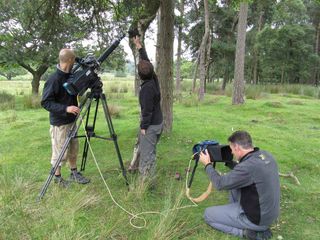
Biologist Samuel Ellis of the University of York (shown here in the middle of Chris Milner, right, and cameraman Mihali Moore, left) hopes to radio tag about 1,000 northern hairy wood ants so researchers can track their movements on a protected English estate.
'Giant' Ants
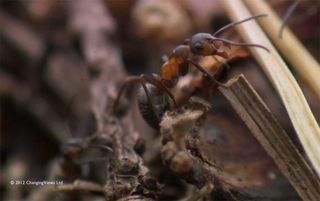
They are the largest species of ants native to the British Isles with workers reaching up to 0.4 inches (10 mm) long.
Stroking Aphids
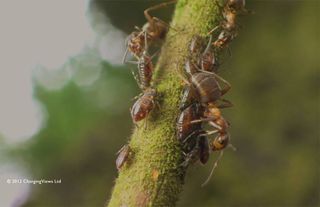
To get food for their young, the wood ants gently stroke sap-sucking aphids, which then produce honeydew; in return, the ants protect these aphids. The ants also aggressively hunt other invertebrates (animals without a backbone), Ellis said.
Ant Tag
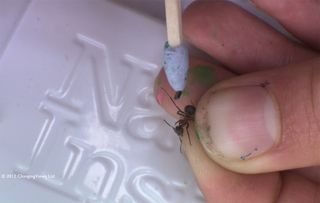
Here, a scientist places a tiny radio tag, about 0.04 inches (1 millimeter) long, to the body of an ant. Ellis isn't sure how long the radio tags will stay put, he said.
Ant Bar Codes
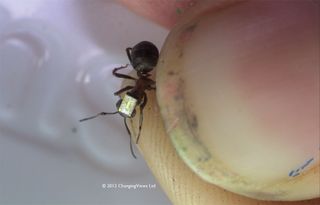
The radio tags act like bar codes. "It gives each ant an individual identity and what this means is you can see which ants are going where and how individual ants interactions work together to make the colony long behaviors," Ellis said in a video produced by the U.K. National Trust, which manages the estate.
Smelly Spray
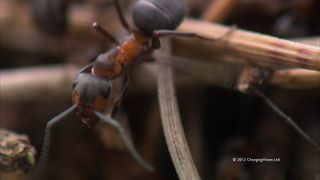
The ants defend themselves from predators by spraying smelly, vinegar-like formic acid. Some birds, like Jays and Green Woodpeckers, use the formic acid spray as a cleansing agent to get rid of parasites, according to the University of York.
Ants Go Walking 2 by 2 ...
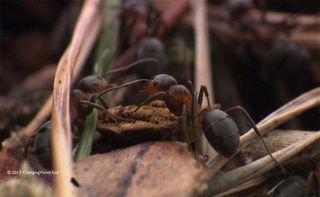
Ellis hopes to learn more about how these ants interact with one another.
Sign up for the Live Science daily newsletter now
Get the world’s most fascinating discoveries delivered straight to your inbox.
Cozy Nest
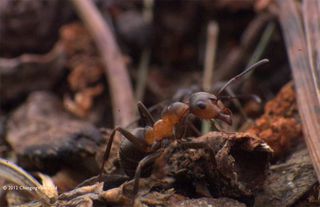
"Hairy wood ants live in mound-shaped nests made out of leaves and twigs and are designed keep the nest warm by trapping heat," Ellis writes in a statement. The metabolic heat produced by such busy ants helps to maintain a cozy nest temperature.
Most Popular

